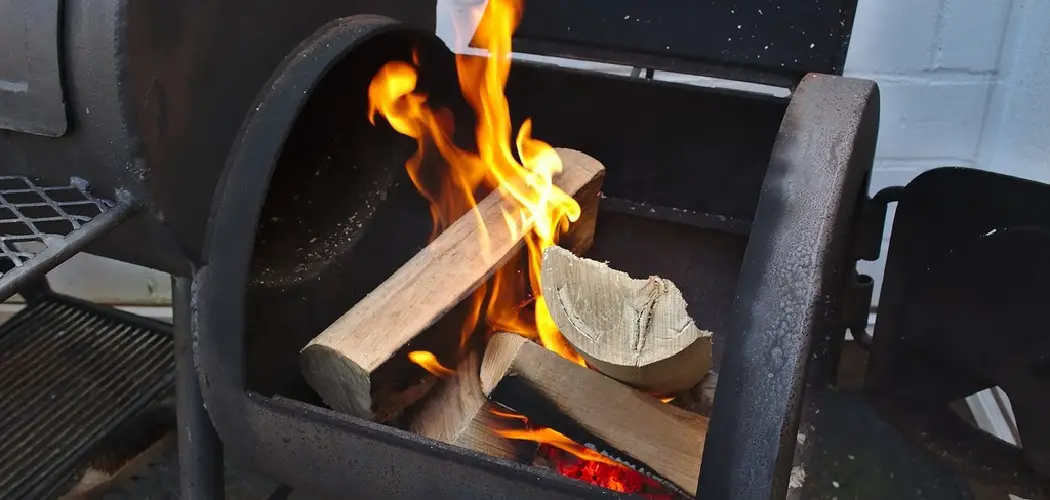
Gathering around a toasty fire pit on a chilly evening can be an excellent way to spend time with loved ones or enjoy a peaceful evening alone.
However, starting and tending to a fire can be difficult if the wood is not correctly stacked. A well-arranged stack of logs ensures the fire burns evenly and safely without smothering the flames. In this blog post, we will dive into some of the best tips and techniques on how to stack firewood in fire pit.
Can You Stack Firewood in the Fire Pit
Stacking firewood in the fire pit can be a bit of a tricky task. While it may seem like a practical way to store your logs, there are some potential hazards you need to consider. For instance, stacking wood too high can cause it to collapse, potentially injuring anyone nearby.
Additionally, stacking wood in the fire pit may obstruct airflow, making it harder to build and maintain a fire. However, with proper precautions and an understanding of how to safely stack firewood, it is possible to make the most of your fire pit and keep your space warm and inviting all winter long.
Why Should You Stack Firewood in Fire Pit
If you’re lucky enough to have a fire pit in your backyard, then you know that it’s the perfect place to gather with friends and family, roast marshmallows, and enjoy a summer evening. But have you ever considered the benefits of stacking the firewood in your fire pit? Not only does it make for a visually stunning centerpiece, but it also allows for better airflow and more efficient burning.
Plus, if you stack your firewood properly, it’ll be easier to access and organize, making for a smoother and more enjoyable experience for everyone. So, the next time you’re getting ready for a cozy night by the fire, don’t forget to stack your firewood for the perfect flame.
The Ultimate Guide on How to Stack Firewood in Fire Pit
1. Choose the Right Wood
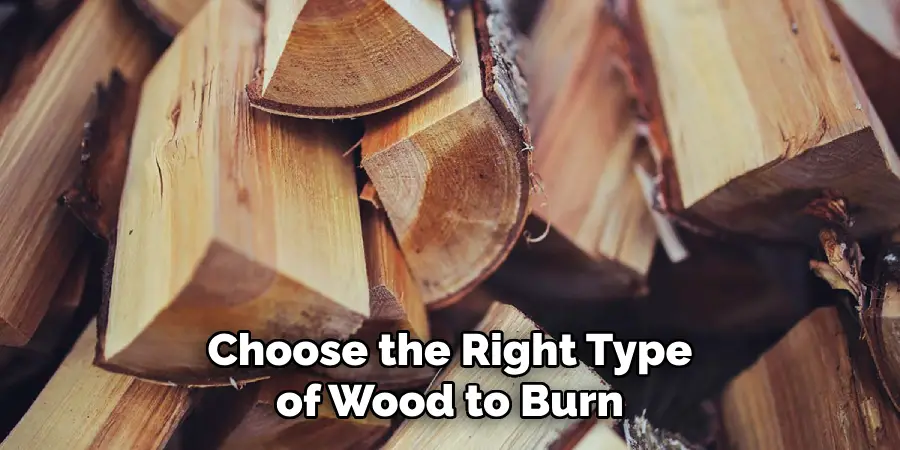
Before stacking the firewood, always choose the right type of wood to burn. Ideally, the logs you select should be dry, dense, and well-seasoned for at least 6-12 months. Softwood tends to burn faster, while hardwood burns more slowly and produces more heat. When stacking the wood, remember to mix the softwood and hardwood to achieve a robust fire that burns for a longer time.
2. Start with the Base Layer
Once you have your wood supply, create a solid base layer. Begin with small-sized logs that lay parallel to each other, ensuring an adequate gap between each log. Make sure the logs are as close and flat as possible. Ensure you cover the bottom of the pit with wood evenly, creating a base with a thickness of around three or four logs high.
3. Stacking Techniques
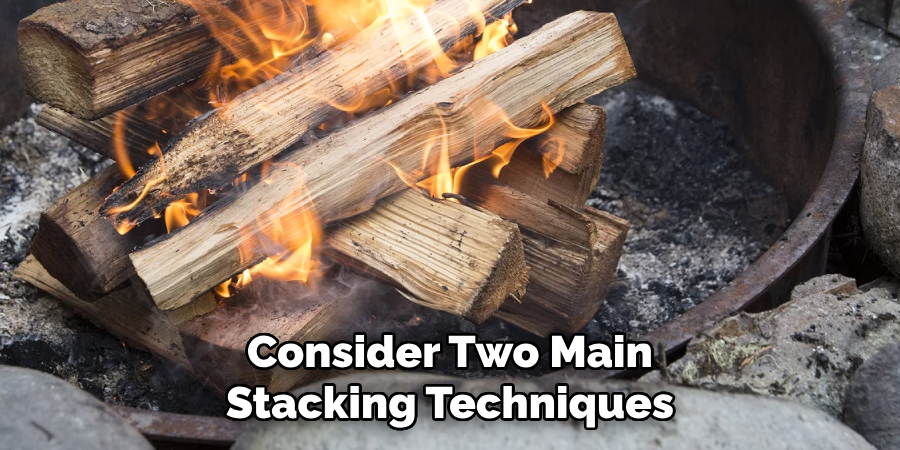
When you’ve finished the base layer, you must start stacking the wood in layers. Consider two main stacking techniques. The round stack is-fashioned, which forms a cone, and the square or linear stack follows a box-like shape. Linear or square stacks are ideal if you wish to produce an exceptional amount of heat over an extended period. Round stacks, on the other hand, are designed to burn faster and release loads of heat quickly.
4. Consider the Structure and Stability of the Stack
When stacking firewood, the aim is to make sure the structure is stable and robust. The last thing you want is for the stack to come tumbling down, which can cause injuries and fire hazards.
Ensure that each stack layer has an alternating pattern to maintain stability. When stacking each layer, ensure you place the logs perpendicular to the layer underneath them. You can use small logs or kindling to balance them and create added support where needed.
5. Leave Space
As you stack the firewood, remember to leave room between the logs to ensure a steady oxygen flow. The gaps will allow air to circulate through the logs, encouraging the fire to burn hotter and longer. It’s essential to leave space between the stacks, so the flames can get in and around the wood.
6. Stack the Wood Neatly
Taking care of tidiness while stacking your firewood is essential. Make sure that all logs are neat, evenly spaced, and stable. If you’re using kindling or small wood pieces to fill in gaps, try to place them in such a way that they look aesthetically pleasing. It will make your fire pit look well-organized and tidy.
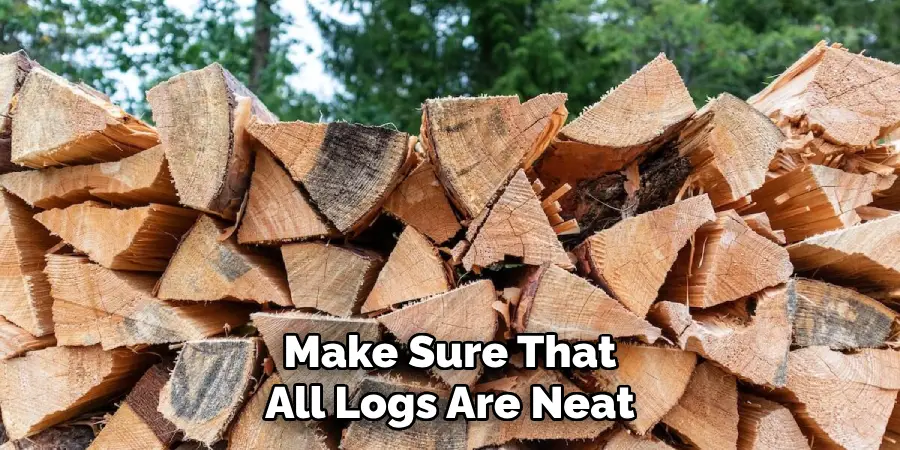
7. Store the Firewood Properly
Finally, if you’re not using your firewood immediately after stacking it in the pit, make sure to store it properly to prevent it from getting damp or wet. The best option is to keep the wood in a dry place that has good air circulation. Covering the firewood with a tarp or plastic wrap can help to protect it from moisture and preserve its burning qualities.
With these tips on how to stack firewood in a fire pit, you can make sure your logs burn hot, long, and clean! Enjoy your cozy fire nights responsibly by following necessary safety precautions and using quality wood!
5 Considerations Things When You Need to Stack Firewood in Fire Pit
1. Location
When stacking firewood in a fire pit, it is important to consider the location of the fire pit. Ensure that the fire pit is located away from any buildings or structures damaged by heat or sparks. Additionally, ensure that the area around the fire pit is clear of flammable materials, such as leaves and grass.
2. Size
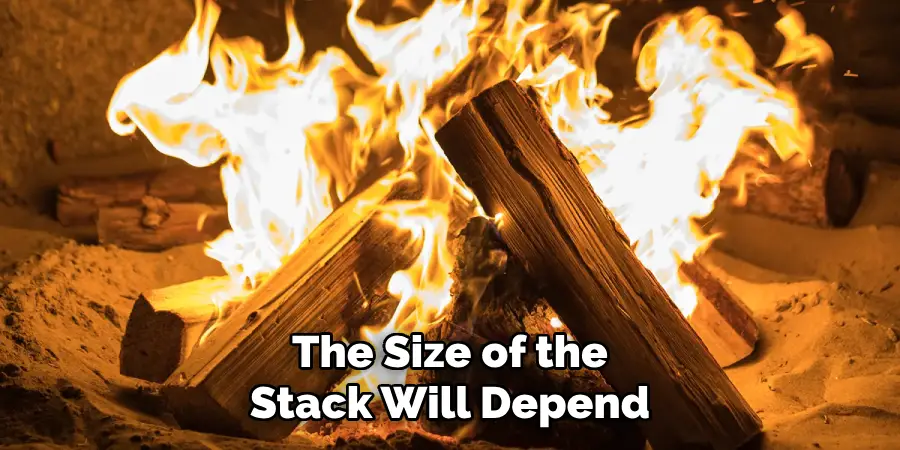
The size of the firewood stack should also be taken into consideration when stacking wood in a fire pit. The size of the stack will depend on how large the fire needs to be and how much fuel is needed to keep it burning for an extended period of time.
3. Type of Wood
The type of wood used for a firewood stack should also be considered when stacking wood in a fire pit. Different types of wood will burn at different rates and produce different amounts of heat, so it is important to choose a type of wood that is suitable for your needs. Hardwoods such as oak and hickory are generally better choices than softwoods such as pine or cedar due to their higher BTU ratings and longer burn times.
4. Proper Stacking Technique
It is also important to use proper stacking techniques when stacking wood in a fire pit. Stacking the logs too close together can lead to poor air circulation, which can cause smoke buildup and result in an inefficient burn. Additionally, make sure that there is enough space between each log so that oxygen can circulate properly and provide adequate combustion for a hot flame.
5. Safety Measures

Finally, safety measures should always be taken when building a firewood stack in a fire pit. Make sure to wear protective clothing such as long pants, long sleeves, gloves, and boots while handling the logs to prevent burns or splinters from occurring during construction or maintenance activities near the flames. Additionally, it’s best practice to keep children and pets away from open fires at all times for their own safety.
By taking these factors into consideration when stacking firewood in a fire pit, you can ensure that the fire is built and used safely and efficiently. With a bit of planning and preparation, building an effective and efficient firewood stack for your fire pit can be quick and easy!
5 Benefits of Stack Firewood in Fire Pit
1. Easy to Light
One of the biggest benefits of stacking firewood in a fire pit is that it makes it easy to light the fire. When wood is stacked in a neat pile, air can circulate the logs, which helps to create an even burn and makes it easier to light the fire. Additionally, stacking the wood also allows for more efficient burning as all of the logs are exposed to oxygen which helps to keep the fire going for longer.
2. Reduced Smoke
Stacking firewood in a fire pit also helps to reduce smoke. When wood is stacked neatly, it creates a more efficient burn, which produces less smoke than if the wood was scattered across the pit. This can help to reduce eye and throat irritation from smoke inhalation, as well as reduce air pollution from burning wood.
3. Increased Heat Output
Stacking firewood in a fire pit also increases heat output, making it much easier to stay warm on cold nights. When wood is stacked neatly, there is less airspace between each log, so more heat will be generated from each log. This allows you to get more heat out of each log and keep your family warm without having to use too much fuel.
4. Cost-Effective
Stacking your own firewood can also be cost-effective when compared with buying pre-cut logs or kindling from a store. By cutting and splitting your logs, you can save money on fuel costs and still have enough wood for multiple fires throughout the winter months.
Additionally, by stacking your own logs, you are able to control how much wood you use each time so that you don’t waste any fuel or money on unnecessary purchases.
5. Aesthetically Pleasing
Finally, stacking your own firewood in a fire pit can be aesthetically pleasing and functional. Stacked logs create an attractive focal point in any outdoor space while providing warmth and comfort during chilly evenings outdoors. Additionally, the neat rows of logs can be used to create unique patterns and designs that will add a touch of style to your outdoor area.
Stacking firewood in a fire pit is an easy way to get the most out of your wood-burning experience. With just a few simple tips and tricks, you can make sure that your firewood stack is effective and efficient, while also making your outdoor space look great!
4 Common Mistakes People Make When Trying to Stack Firewood in Fire Pit
1. Piling Firewood Too High
One of the most common mistakes people make when trying to stack firewood in a fire pit is piling it too high. This can cause the firewood to become unstable and topple over, potentially causing a hazardous situation. It’s important to ensure that you are stacking the wood in a way that is secure and stable, with no pieces extending beyond the top of the fire pit.
2. Not Securing Firewood Properly
Another mistake people make when stacking firewood in a fire pit is not securing it properly. This can be done by using stones or bricks to create an even base for the wood, or by using metal rods or stakes to hold each piece of wood in place. This will help ensure that the wood does not move during burning and will also make removing it easier when you are done with your fire.
3. Ignoring Clearance Requirements

When trying to stack firewood in a fire pit, many people forget about clearance requirements that may be necessary for safety reasons. For example, if your fire pit has an open flame, there should be at least 3 feet of clearance between any combustible materials and the flames. This includes any nearby furniture, trees, or other items that could catch on fire if they come into contact with an open flame.
4. Overloading the Fire Pit With Wood
Lastly, another common mistake people make when stacking wood in their fire pits is overloading them with too much wood at once. While it may seem like adding more wood would help keep your fire going longer, this can have the opposite effect, as too much fuel can cause smoke buildup and smother out your flame before it has had time to burn properly.
For best results, only add enough wood for one burn session at a time so that you don’t overload your fire pit with fuel and waste valuable resources!
Conclusion
In conclusion, there is an art to stacking firewood in a fire pit. By following the tips and techniques detailed in this blog post, you can easily achieve a well-structured and stable stack that provides all the warmth and coziness you need on a chilly evening.
Remember to use the right type of wood, create a sturdy base layer, use the correct stacking technique, ensure structural stability, and leave enough space between each log. With these handy tips, you’ll be able to stack your firewood correctly and create an enchanting and safe atmosphere that you’ll cherish forever. Thanks for reading our post about how to stack firewood in fire pit.
About
Outdoor Fixes is a distinguished figure in the world of Diy design, with a decade of expertise creating innovative and sustainable Diy solutions.
His professional focus lies in merging traditional craftsmanship with modern manufacturing techniques,
fostering designs that are both practical and environmentally conscious. As the author of diy,
outdoorfixes delves into the art and science of outdoorfixes-making, inspiring artisans and industry professionals alike.
Education RMIT University
(Melbourne, Australia) Associate Degree in Design (Outdoor Fixes) Focus on sustainable design, industry-driven projects,
and practical craftsmanship. Gained hands-on experience with traditional and digital manufacturing tools, such as CAD and CNC software.
Nottingham Trent University
(United Kingdom) Bachelor’s in outdoorfixes.com and Product Design (Honors) Specialized in product design with a focus on blending creativity with production
techniques. Participated in industry projects, working with companies like John Lewis and Vitsoe to gain real-world insights.
Publications and Impact
In diy, Outdoor Fixes his insights on indoor design processes, materials, and strategies for efficient production.
His writing bridges the gap between artisan knowledge and modern industry needs, making it a must-read for both budding designers and seasoned professionals.

